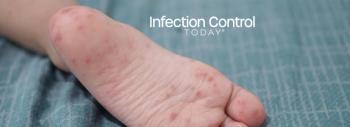
National Necrotizing Fasciitis Foundation Warns About Vibrio Infections
The National Necrotizing Fasciitis Foundation (NNFF) today issued a public service alert about a potentially deadly bacterium called Vibrio vulnificus.
"This microbe can get into the body through a tiny cut in the skin, causing a life-threatening infection," explains Jacqueline Roemmele, executive director of the NNFF. "People who might come in contact with Vibrio need to know what to look for so that they can get immediate treatment."
The microbe thrives in warm salty and brackish water, common to estuaries and other tidal areas. This summer it has caused outbreaks of serious illnesses in Florida, the Chesapeake Bay area, Louisiana, and many other coastal regions. Some victims have lost limbs to the flesh-eating infection. Others have died.
According to Dr. James Oliver, professor of biology at the University of North Carolina at Charlotte and a leading expert on the bacterium, people can get sick from Vibrio from eating raw contaminated oysters (or other raw seafood) or from even a small wound. Many cases occur as the result of small nicks in the skin that happen when people shuck oysters, peel shrimp, or clean fish.
In people with underlying illnesses, Vibrio can cause raging life-threatening infections throughout the entire body. More typically, the microbe causes an infection at the site of the wound. "Tragically, that infection can quickly progress to necrotizing fasciitis, or flesh-eating disease, often resulting in amputation," said Roemmele. Death occurs in 25 percent of these wound cases.
So how can people protect themselves and their families?
"The most important step is being aware and vigilant about the threat," says Dr. John Crew, director of the Advanced Wound Care Center at Seton Medical Center in Daly City, Calif., and an expert in treating flesh-eating disease. "If you are swimming or fishing in warm salty water and get a cut or a scrape, you need to keep a close eye on the wound to watch for any signs of infection. If it starts to get inflamed, get immediate medical treatment."
In most cases, treatment with antibiotics will stop the infection. But not always. "If the infection doesn't get better quickly, and especially if the inflamed area starts to grow, then you need to seek out a medical center that has experience with treating flesh-eating disease," says Crew.
Some examples include the Wound Treatment Center at the Opelousas General Health System in Opelousas, Louisiana; the Wound Care Center at Eisenhower Medical Center in Rancho Mirage, Calif.; and Crew's Wound Care Center at Seton Medical Center. Seton and others are now using a new treatment pioneered by Crew in which wounds are irrigated with an antimicrobial cleanser called NeutroPhase, made by NovaBay Pharmaceuticals, Inc. In lab tests, NeutroPhase both kills bacteria and neutralizes the toxins that eat away tissue. In both the medical journal WOUNDS and in interviews, Crew has described how the treatment works.
"Vibrio infections can be deadly," says Crew. "But with quick and aggressive treatment, we believe it should be possible to save the lives-and the limbs-of anyone who gets infected."
Source: National Necrotizing Fasciitis Foundation (NNFF)
Newsletter
Stay prepared and protected with Infection Control Today's newsletter, delivering essential updates, best practices, and expert insights for infection preventionists.






